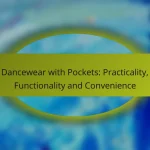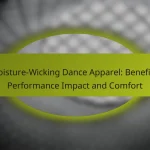As spring and summer approach, dance apparel embraces vibrant and soft color palettes that capture the essence of the season. From pastel shades to bold hues and floral inspirations, these colors not only enhance the aesthetic of dancewear but also reflect current trends, making them essential for both designers and dancers alike.
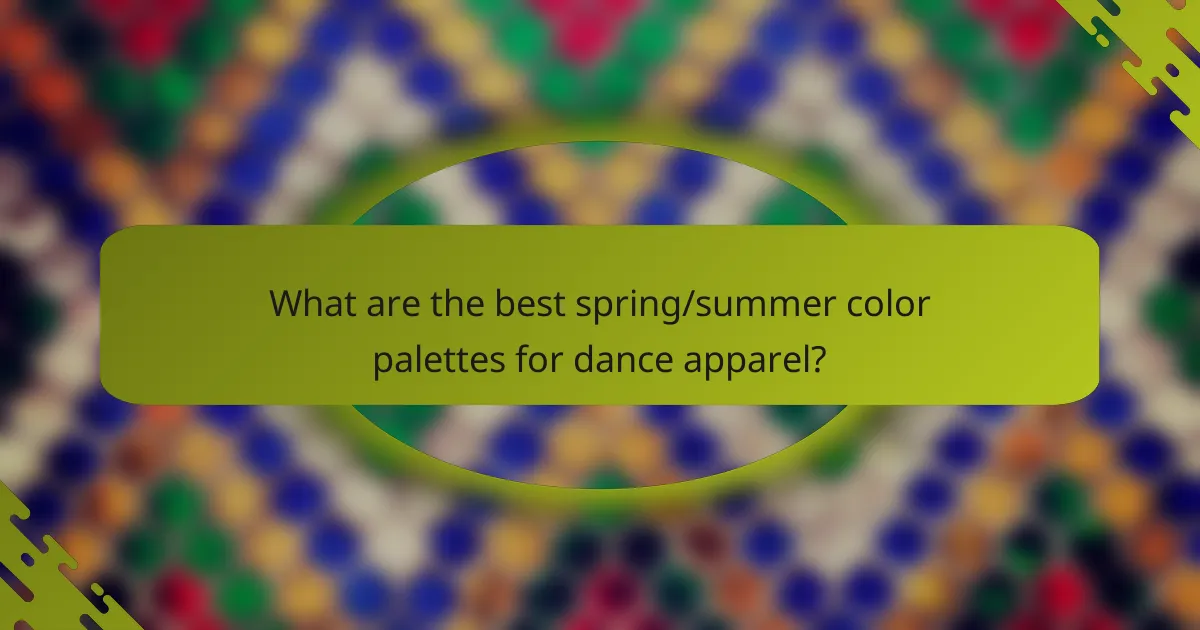
What are the best spring/summer color palettes for dance apparel?
The best spring and summer color palettes for dance apparel include a variety of vibrant and soft shades that reflect the season’s energy. Key palettes to consider are pastels, bright and bold colors, earthy tones, floral inspirations, and neon hues, each offering unique aesthetics and moods suitable for different dance styles.
Pastel color palette
The pastel color palette features soft, muted shades like lavender, mint green, baby blue, and pale pink. These colors evoke a sense of calm and elegance, making them ideal for ballet and contemporary dance outfits. When choosing pastels, consider fabrics that enhance the softness, such as chiffon or lightweight cotton.
To effectively incorporate pastels into your dance apparel, mix and match different shades for a layered look. For instance, pairing a light pink top with mint green bottoms can create a harmonious ensemble that is visually appealing and seasonally appropriate.
Bright and bold color palette
Bright and bold colors like fuchsia, electric blue, and vibrant yellow are perfect for making a statement on stage. These colors capture attention and can energize both the dancer and the audience. They work well for styles such as jazz and hip-hop, where dynamic movement is key.
When using bright colors, balance is essential. Consider incorporating neutral accessories or layering with darker shades to prevent overwhelming the overall look. A bright top paired with black leggings can achieve a striking yet balanced outfit.
Earthy tones palette
The earthy tones palette includes colors like terracotta, olive green, and sandy beige, which reflect nature and provide a grounded aesthetic. This palette is suitable for styles that emphasize connection to the earth, such as modern dance or folk dance. Earthy tones can create a warm and inviting atmosphere.
To enhance the earthy look, opt for natural fabrics like linen or organic cotton. Combining different earthy shades can create depth; for example, pairing an olive green top with terracotta bottoms can yield a cohesive and stylish outfit.
Floral-inspired color palette
Floral-inspired colors draw from the vibrant hues found in flowers, such as coral, sunflower yellow, and sky blue. This palette is lively and perfect for spring and summer performances, especially in styles like lyrical dance that often incorporate themes of nature and beauty. Floral patterns can also add visual interest to dance apparel.
When selecting floral-inspired colors, consider using prints or patterns that reflect the season’s blooms. A floral print leotard paired with solid-colored shorts can create a playful yet sophisticated look that embodies the spirit of spring and summer.
Neon color palette
The neon color palette features eye-catching shades like neon pink, lime green, and bright orange. These colors are perfect for high-energy dance styles, such as street dance or dance fitness, where visibility and vibrancy are crucial. Neon colors can create an exciting and youthful vibe.
To effectively use neon colors, consider pairing them with darker tones to create contrast. For example, a neon top with black leggings can make the bright colors pop while maintaining a balanced appearance. Additionally, ensure that the fabric is breathable and comfortable for movement.

How do seasonal color trends impact dance apparel choices?
Seasonal color trends significantly influence dance apparel choices by dictating the hues and shades that are popular during specific times of the year. Designers and consumers alike align their selections with these trends to ensure that their dancewear is both stylish and relevant.
Influence of fashion weeks
Fashion weeks play a crucial role in setting seasonal color trends, showcasing collections that highlight the colors expected to dominate the upcoming seasons. Designers often draw inspiration from these events, incorporating trending colors into their dance apparel lines to attract attention and align with current styles.
For example, if a fashion week emphasizes pastel shades for spring, dancewear brands may introduce leotards and skirts in soft pinks, blues, and yellows to meet consumer expectations. Staying updated with these trends can help brands remain competitive in the market.
Consumer preferences
Consumer preferences shift with seasonal color trends, as dancers often seek apparel that reflects the latest styles. During spring and summer, lighter and more vibrant colors tend to be favored, while darker, richer tones are more popular in fall and winter.
Brands should consider conducting surveys or focus groups to gauge which colors resonate most with their target audience. Offering a range of colors that align with seasonal trends can enhance customer satisfaction and boost sales.
Brand marketing strategies
Brands utilize seasonal color trends in their marketing strategies to create appealing campaigns that resonate with consumers. By showcasing dance apparel in trendy colors, brands can attract attention and drive sales during peak seasons.
Promotions, social media campaigns, and influencer partnerships often highlight these colors to create buzz. For instance, a brand might launch a summer collection featuring bright, tropical colors to align with the season’s vibrant energy, encouraging dancers to refresh their wardrobes.
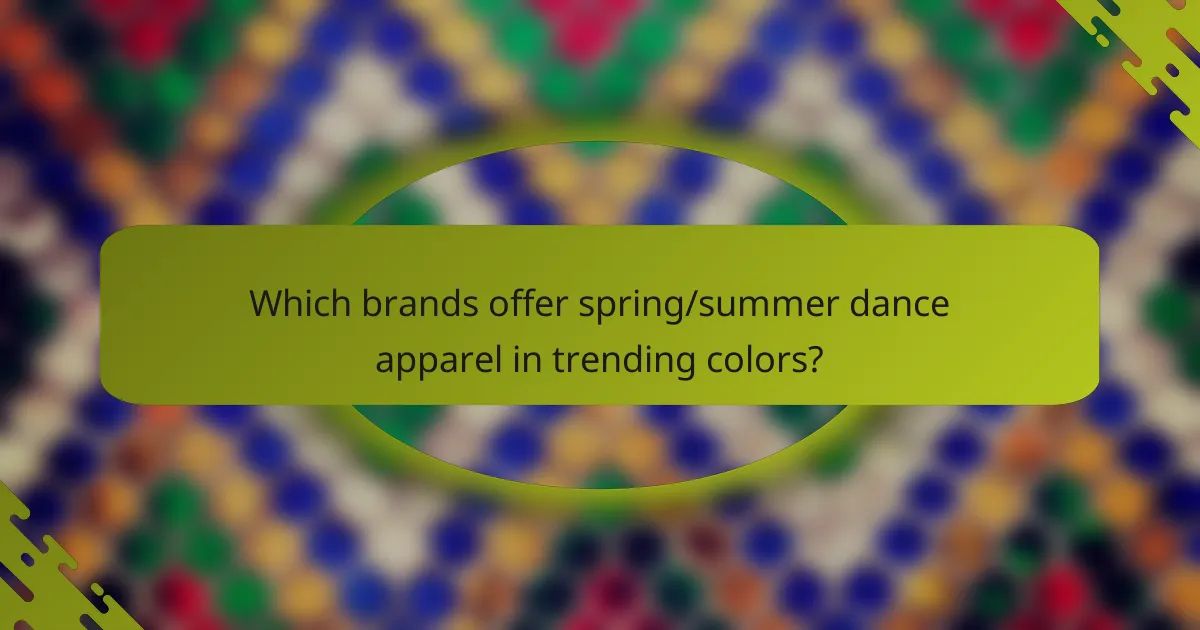
Which brands offer spring/summer dance apparel in trending colors?
Several brands are recognized for their spring and summer dance apparel that features trending colors. Notable names include Bloch, Capezio, Wear Moi, and Grishko, each offering unique styles and color palettes that align with seasonal trends.
Bloch
Bloch is known for its vibrant and stylish dance apparel that captures the essence of spring and summer. Their collections often include bright pastels and bold hues, making them ideal for performances and classes alike.
When selecting Bloch dancewear, consider their use of lightweight materials that enhance breathability and comfort during warm weather. Look for items like leotards and skirts that come in seasonal colors such as coral, mint green, and sunny yellow.
Capezio
Capezio offers a diverse range of dance apparel that reflects current color trends for spring and summer. Their designs often feature playful patterns and fresh color combinations that appeal to dancers of all ages.
For those shopping Capezio, focus on their collections that highlight colors like lavender, sky blue, and peach. These shades not only look great on stage but also provide a cheerful vibe for rehearsals and classes.
Wear Moi
Wear Moi is celebrated for its elegant and sophisticated dance apparel, often incorporating seasonal colors into their designs. Their pieces are crafted with attention to detail, making them suitable for both performance and practice.
When exploring Wear Moi, pay attention to their offerings in soft pastels and vibrant shades. Items such as tutus and leotards in colors like blush pink and seafoam green can elevate a dancer’s wardrobe for the warmer months.
Grishko
Grishko combines traditional craftsmanship with modern aesthetics, offering dance apparel that features trending colors for spring and summer. Their garments are designed with comfort and style in mind, making them popular among dancers worldwide.
While considering Grishko, look for their use of rich colors like deep red and bright turquoise. These selections not only stand out but also allow dancers to express their individuality during performances and classes.
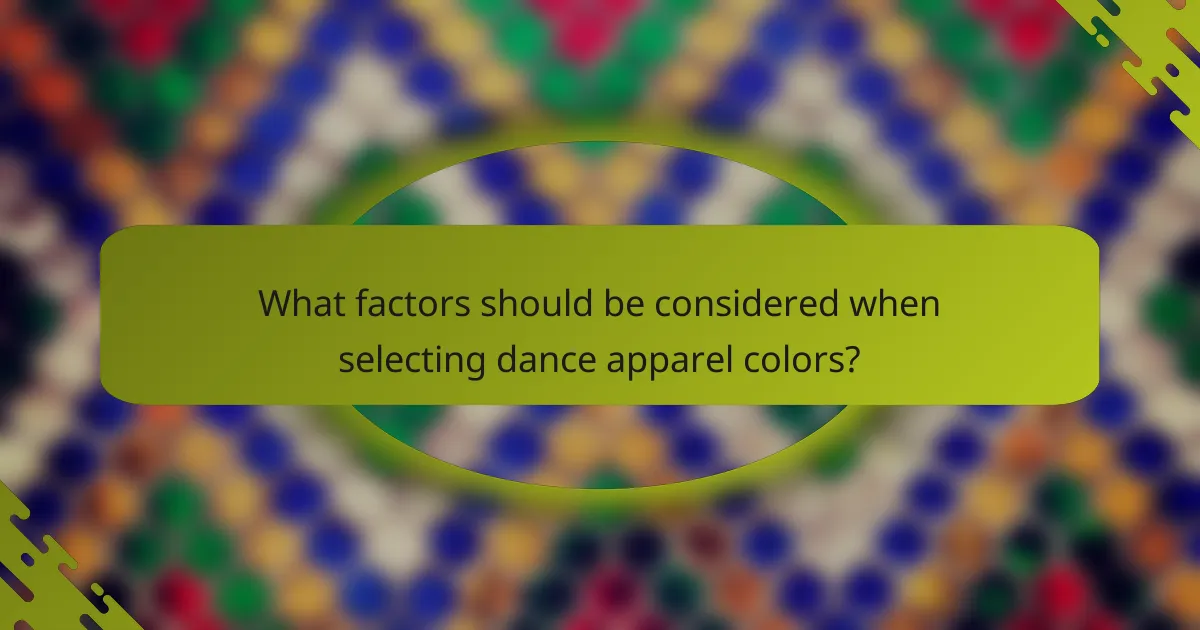
What factors should be considered when selecting dance apparel colors?
When selecting dance apparel colors, consider skin tone compatibility, the appropriateness for the specific dance style, and the fabric’s colorfastness. These factors ensure that the chosen colors enhance performance and appearance while maintaining the quality of the garments.
Skin tone compatibility
Skin tone compatibility is crucial for selecting dance apparel colors that flatter the dancer’s natural complexion. Warm skin tones typically look great in earthy colors like oranges and yellows, while cool skin tones often shine in blues and purples. Testing colors against the skin in natural light can help determine which shades are most complementary.
Consider creating a color palette that includes both primary and accent colors that align with the dancer’s skin tone. This approach not only enhances the overall look but also boosts confidence during performances.
Dance style appropriateness
Different dance styles often have traditional color palettes that reflect their cultural backgrounds or themes. For instance, ballet may favor soft pastels, while hip-hop often embraces bold, vibrant colors. Understanding the expectations of each dance style can guide color selection to ensure it aligns with the performance’s artistic vision.
When in doubt, consult with instructors or choreographers about preferred colors for specific routines. This collaboration can help avoid mismatches that may detract from the overall performance aesthetic.
Fabric colorfastness
Colorfastness refers to how well a fabric retains its color when exposed to washing, sunlight, and sweat. Selecting dance apparel with high colorfastness is essential to maintain the vibrancy of the chosen colors over time. Fabrics like polyester and nylon generally offer better color retention compared to cotton.
Before purchasing, check care labels for washing instructions and colorfastness ratings. Avoid garments that require harsh chemicals for cleaning, as these can degrade the fabric and its colors. Opt for items that can withstand regular washing while keeping their original hue intact.
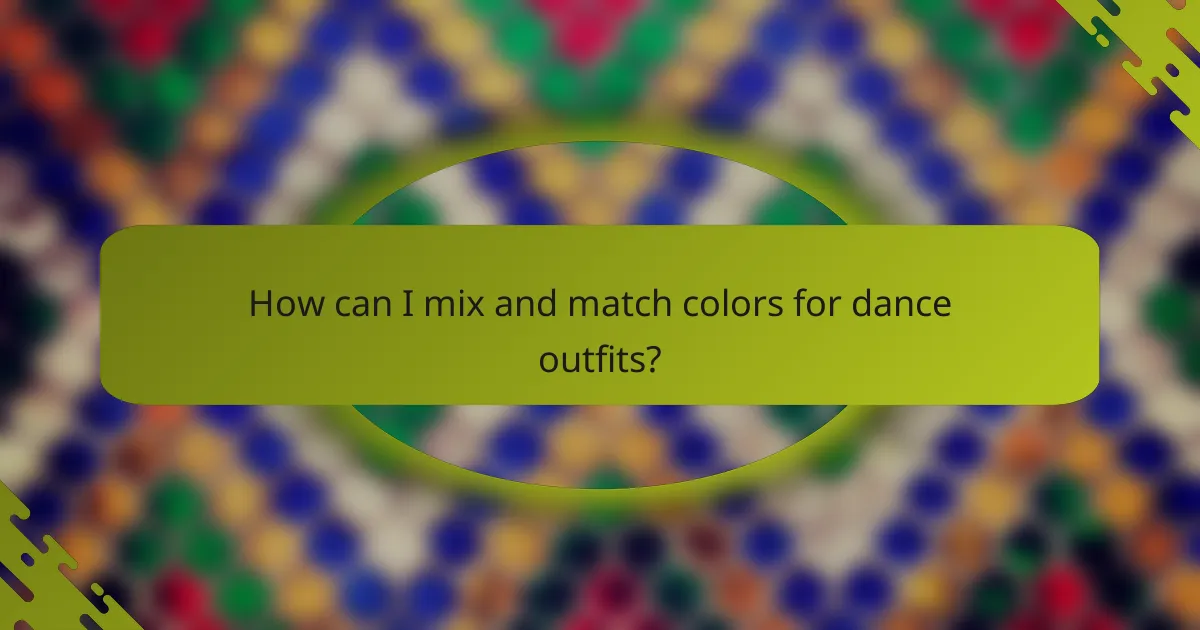
How can I mix and match colors for dance outfits?
Mixing and matching colors for dance outfits involves understanding color theory, personal style, and the overall vibe of the performance. Start with a base color and build around it using complementary or analogous shades to create a cohesive look.
Understanding Color Theory
Color theory is essential when mixing and matching colors. Familiarize yourself with the color wheel, which shows primary, secondary, and tertiary colors. Complementary colors, which are opposite each other on the wheel, create vibrant contrasts, while analogous colors, which are next to each other, offer a more harmonious look.
For example, pairing a bright blue with orange (complementary) can create a striking outfit, while combining shades of blue with green (analogous) results in a soothing palette. Consider the mood you want to convey through your dance performance when selecting colors.
Choosing a Base Color
Selecting a base color is crucial for a well-coordinated outfit. This color will dominate your outfit and should reflect your personal style or the theme of the performance. Neutral colors like black, white, or gray can serve as versatile bases, allowing for more colorful accents.
If you prefer a bolder approach, choose a vibrant color like red or teal as your base. From there, you can add layers or accessories in complementary or analogous shades to enhance the overall look.
Accessorizing with Color
Accessories are a great way to introduce additional colors without overwhelming the outfit. Use items like headbands, leg warmers, or jewelry to incorporate contrasting or matching colors. This approach allows for flexibility and creativity in your dance apparel.
For instance, if your base outfit is a soft pink, consider adding a deep burgundy belt or a pair of light pink shoes. This method not only adds depth but also allows for easy changes between performances or practices.
Common Pitfalls to Avoid
When mixing and matching colors, avoid using too many colors at once, as this can create a chaotic appearance. Stick to a maximum of three main colors to maintain balance. Additionally, be cautious with patterns; if your outfit has a bold pattern, keep other elements simple to avoid clashing.
Another common mistake is neglecting the context of the performance. Ensure that your color choices align with the theme or mood of the dance, as this enhances the storytelling aspect of your performance.
